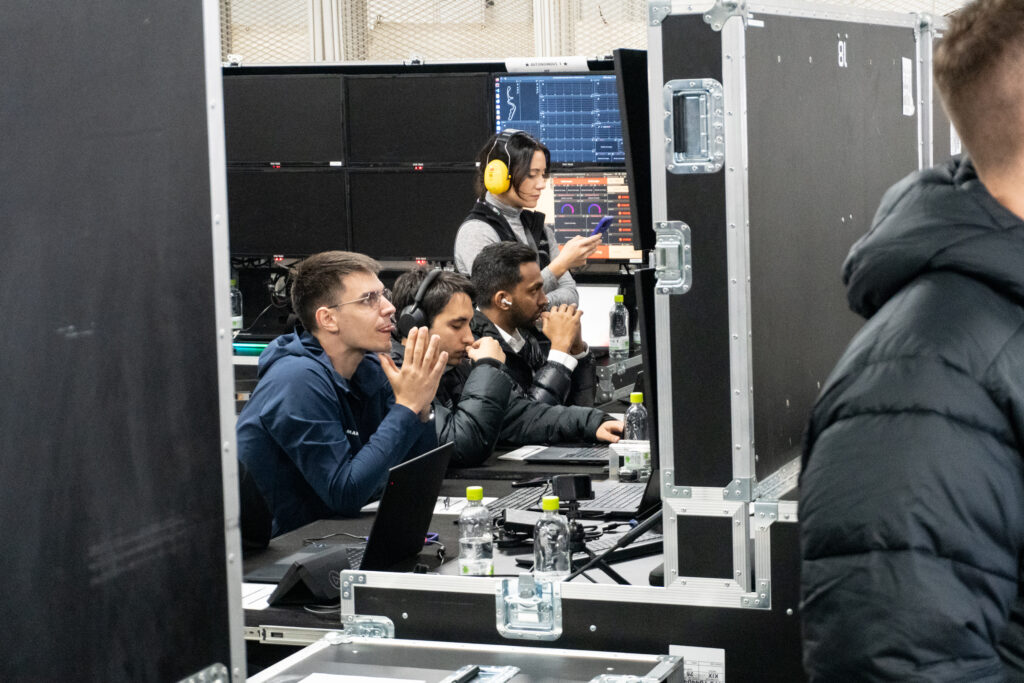The “race”
On the Saturday of the race weekend, a demonstration of two A2RL vehicles raced around the circuit. The vehicles were moving quickly down the straight. The corners, though? We were told that they were still a bit tricky for the vehicles to navigate.
Down in the pits, the team watched a bank of monitors. Sensor data came in from the vehicles—zeros and ones representing the track translated into a sea of graphs. To help parse the data quickly, the system shows a green flag when everything is going well and red flags when the values are out of whack with what’s supposed to happen. In addition to how the vehicle is moving, information about fuel consumption, brake wear, and tire temperature is shared with the team.
Roberto Baldwin
Former F1 driver Kvyat was drafted in to compete against the AI.
Roberto Baldwin

Roberto Baldwin
The A2RL team at their battle station.
Roberto Baldwin
Former F1 driver Kvyat was drafted in to compete against the AI.
Roberto Baldwin
The A2RL team at their battle station.
Roberto Baldwin
All of this data lets the team know how hard it is pushing the vehicle. If everything looks good, the team can push the vehicle to go a little quicker, to push a little harder for a better lap time. Humans elsewhere in the pits will soon tell their human drivers the same thing. Push harder, be quicker; the car can handle it. The data coming in predicts what will happen in the next few seconds.
Hopefully.
The individual teams will try to find the optimal line, just like the human team, but it doesn’t always follow what humans have done before on a track. They work to create an optimal line for the autonomous car instead of just copying what humans are doing.
This team has been at Suzuka for weeks ahead of this race. The HD map they bought from a third party was off by meters. In that time the team had to remap the track for the vehicles and teach them how to drive on a circuit that’s narrower than the track at Abu Dhabi.
The car is outfitted with Sony 4K cameras, radars, lidar, high-definition GPS, and other sensors. The electric steering can handle up to five Gs. The hydraulic brakes on each wheel could be triggered individually, but currently, they are not, according to Pau. However, Pau did note that enabling this function would open up new possibilities, especially in cornering.


